Fire Emblem Heroes: A Case Study of Nintendo and Mobile Gaming
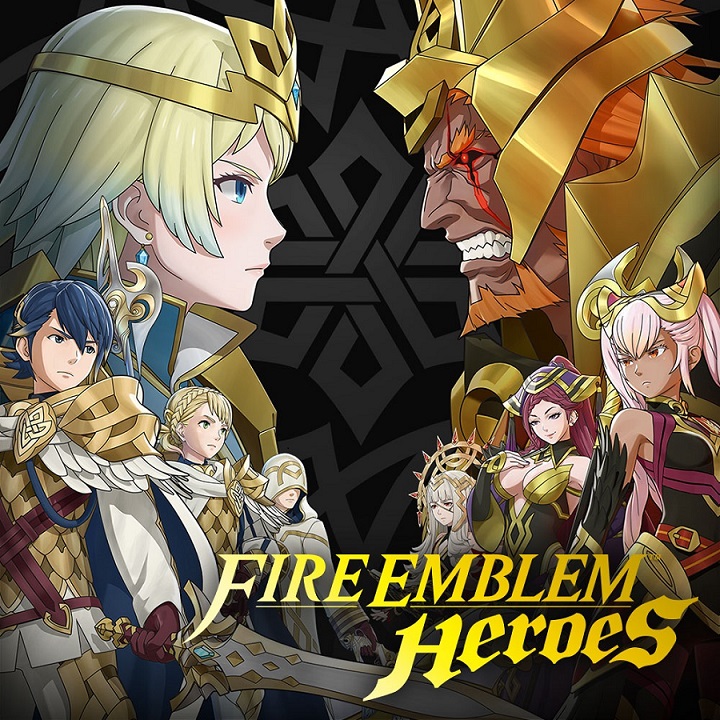
The well-documented success of Nintendo’s Fire Emblem Heroes (FEH) for Android and iPhone is almost an enigma among Nintendo’s mobile library. Nintendo’s first mobile app/game Miitomo officially closed down a few weeks ago after it died out due to a lack of players. Its predecessor, Mario Run, enjoyed only a moderate success – which is actually shocking considering Mario is usually how Nintendo makes their easy money. Yet in the face of Mario, the once-niche little strategy series Fire Emblem has become the juggernaut of Nintendo’s mobile line-up. A year after its release the game has made a whopping $300 million profit! But what makes it so special?
How and why is FEH so succesful?
There are a multitude of answers for this, but the first thing we should look at is FEH’s payment model. FEH is free-to-play with in-app purchases. This is a tried-and-true model for the many successes on the video game market between the mobile juggernaut Clash of Clans and even the console-market’s Fortnite. The strategy of letting anyone play your game, then introducing ways of speeding up progress through purchases or purchasing cosmetic items is the basis of how free-to-play works. But Fire Emblem Heroes operates on a model known as “Gacha”, originating from Japan.
What is a “Gacha”?
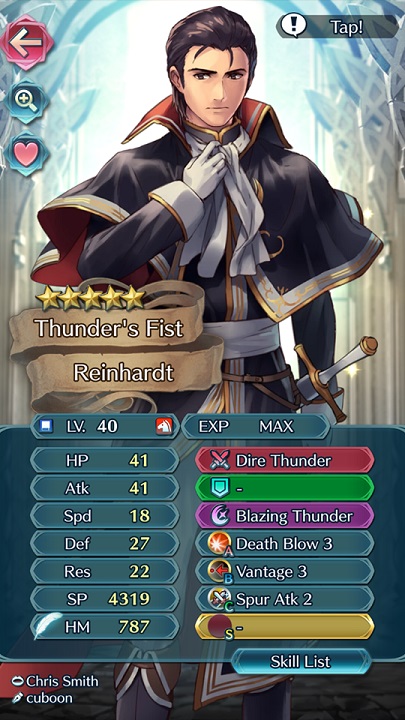
Gacha is defined as a system that randomly dispenses goods when money (or in-game currency) is deposited into it. It’s kind of like booster packs of trading cards. You pay the money then hope you get something good out of the cards! Gacha games do this instead with virtual goods, and in Japan usually in the form of characters and equipment with pretty art and stats attached to them for the sake of the game. Often these games are free-to-play and there are ways of earning currency in-game to use to collect goods, characters, or items. It’s basically loot box systems’ Japanese cousin. It’s entirely digital and randomized so there is NO guarantee you will get what you want. It’s like loot boxes in the sense that this system relies on consumers to keep depositing money until they get what they want.
So, how does this system implement itself into a turn-based strategy mobile RPG game? Firstly, let’s have a quick overview of what Fire Emblem Heroes is actually about. FEH, like the series it’s based on, is a turn-based strategy game with strong RPG elements. You, the player, command an army of personally chosen and trained units to engage with enemies on tiles quite like a chessboard. It’s a simple premise, but when you mix in skills, supports, terrain, reinforcements, and colour match-ups the game can get quite deep into the strategy and RPG gameplay. Much more deeply than you might expect from a mobile game.
But the basis of the game is clear. You collect “Heroes” and assemble an army to take on enemy forces via combat on tile-based maps. But when starting the game, how do you collect “Heroes”? Well, it’s simple; you summon them! This is where the Gacha kicks in. In-game, you offer a currency called “orbs” to a mystical altar and characters from across the Fire Emblem multi-verse are summoned to your aid and join you on your quest to save your kingdom. But how do you collect orbs? Simple; for each victory in story mode you are awarded an orb. If you clear enough maps, and you will have enough orbs to go perform a summon for more heroes. You use your heroes to go clear more maps, earn more orbs, and get more heroes… you can see the pattern here, right?
The game entices you to keep playing by using the very Heroes as a reward. The gameplay is genuinely quite fun and engaging, much more than a mobile game normally is at least, and there is a serviceable story mode to keep you invested (mind you, compared to most Fire Emblem storylines this one is a fair bit weaker). However, the game knows that the reason people keep playing and clearing harder and harder maps is for more orbs. That’s why they keep offering them to the player as the most precious reward, above all the other currencies and items you can earn in the game. Orbs are the only way to perform a summon.
And what if you already have all the heroes you want? Are orbs useless then? Oh no, developers Intelligent Systems and Nintendo are well aware of this. As with all Gacha games, nearly every two weeks new heroes are released via updates to entice the players into earning and spending their orbs on the lucky chance they might get that one fancy new hero they really want… and if the orbs they earn don’t get them the desired hero, a player can always purchase orbs from the in-game store.
The pure randomness and luck of this system is how Nintendo made their money from this game last year. For every player who got lucky and got the EXACT hero they wanted on their first summon, there is someone out there who had to spend hundreds of dollars to get lucky enough to get the hero they wanted. Gacha is a kind of inherently insidious system, as it preys on gambling instincts and gets people to test their luck each time they spend their time or money trying to get what they want out of the randomized system.
Not to mention, there are people out there who spend thousands each time a new hero comes out to make sure their account is as “blinged out” as possible. The Gacha communities refer to these people as “whales” as their accounts are so over-inflated with high-rarity characters.
Not to mention there are special limited-time “event” heroes that come around only during Christmas, Halloween, or Easter and can’t be obtained otherwise. Knowing a hero is around for such a limited time, and won’t show up again for possibly another 12 months, is a way Intelligent Systems can tempt their player-base into purchasing some orbs to test their luck. It’s also no coincidence that these special event heroes often have more… “revealing” outfits to further tempt players into summoning for them.
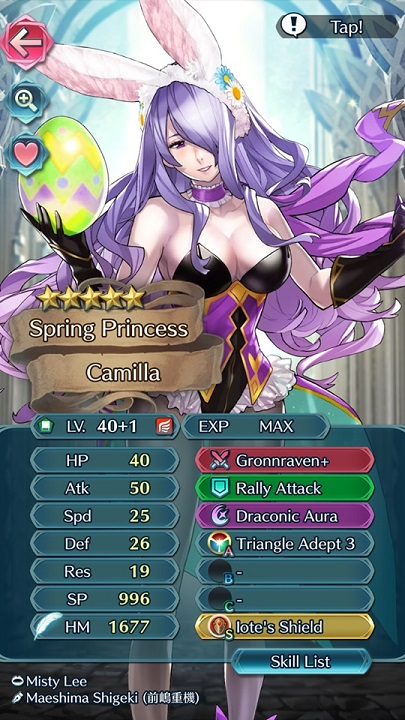
It may sound like this is all bad, and it really can be as I’ve seen countless stories of people developing gambling habits with these kinds of games, but there are many upsides to this system. The pure randomness of a Gacha system also makes this game really approachable. The idea that anyone can get lucky enough to get a cool character they like just by playing is why so many people have picked up this game from the app-store. I’ve met countless people who know nothing about Fire Emblem, yet play a fair bit of FEH. That, to me, speaks volumes of its success.
However, there are lots of Gachas out there in the world. Some with even more waifus in even skimpier clothing – how does Nintendo and Intelligent Systems compete with them?
Accessibility,”fairness”, generosity, and Gacha games – how do they fit together?
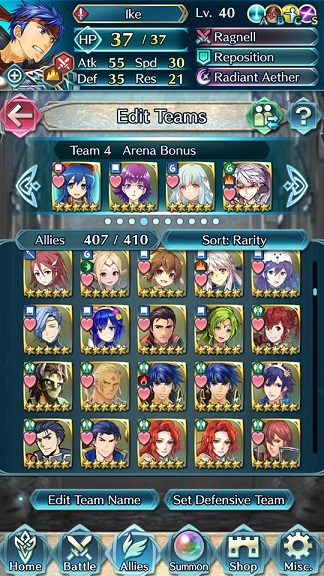
It’s actually quite simple. Most of these games are about collecting simple 2D images of pretty girls and boys with stats attached to them. In fact, many of these games have the gameplay as a secondary function. They become less of a game, and more like collectibles. However, FEH invests heavily in creating a fully functioning strategy game that is easy to approach. Yet it is simultaneously deep enough for a fanatic (like me) to really get into the nitty gritty of creating optimal strategies and skill-sets. I mean, I know people with children as young as nine-years old who play this game on tablets – it’s THAT easy to play, a child can do it!
That and, Fire Emblem Heroes is extremely generous. Orbs are easy to come by and plentiful (especially as a new player). Almost every day you are given a handful for just logging in. If you do the basic quests you can have heaps of summons. If you look it up, there are countless “free-to-play” accounts (basically people who have never spent money on FEH) which have a multitude of high-rarity units simply based off of the hand-outs the developers give to the free-to-play player-base. Unlike other Gatchas, such as Fate/Go or Digimon Links. To get the equivalent of a single orb in Fate/Go takes about five story battles on average. Digimon Links also takes just as many battles to get a single orb equivalent. Not onyl do you get an orb per victory in FEH, but you also get an extra 2 orbs if you clear the highest difficulty of the one story map. This generosity and fairness to new and old players is a key component of how Intelligent Systems made that astounding $300 million in the game’s one year life-span.
I believe that if the player base is consistently happy and feels like they’re being treated well then they are more likely to spend orbs when the time comes. They’ll remember the times that Intelligent Systems gave them an abundance of free orbs ,so then, they’ll think; “Oh why not, just a few orbs won’t hurt!” I know because this is how I first spent money on orbs. By respecting and treating their player-base, Intelligent Systems creates a loyalty and trust between player and developer.
Now, you can be the most generous Gacha in the world with the greatest gameplay in the world – but I still don’t think these are the defining reasons as to FEH’s success as a mobile game. I loathe to acknowledge the word publicly and professionally writing this but… FEH owes a lot of its success to… waifus.
“Waifus” – objects of affection
I know, I know. I’m sorry, but I think it’s the honest truth. For those lucky enough to not know what the term “waifu” means, it’s a term co-opted by the western anime/manga/otaku community that has also recently started bleeding into the gaming and pop culture spheres thanks to popularization by Pewdiepie and the like. Its origin comes from the Japanese pronunciation of the English word “wife” and is often both ironically and unironically used by fans to describe their affection towards their favourite anime and video game characters. Characters become objects of affection, as individuals attach their own feelings to these fictional characters.
“Waifus” are a huge part of Gacha culture in such a way that it’s a widely known term across Gacha communities. If a new set of characters are released, and they’re all female, some of the more cynical fans scoff at the “waifu-bait” nature of these updates. Character inclusions are a sore topic in the FEH community, but I don’t have time to get into it here. FEH even did a special “bride” event for its characters last year with limited time outfits. Like, as in literal wives. If this isn’t acknowledging consumer demand then I don’t know what is.
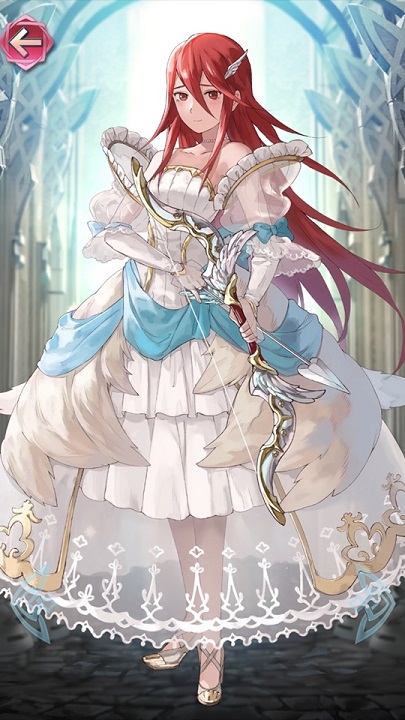
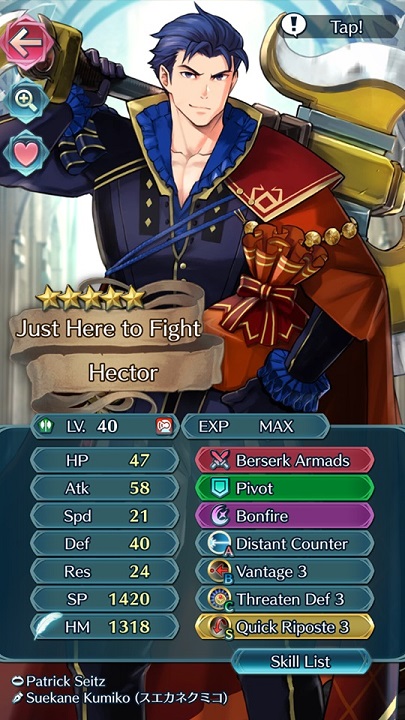
But why do people care about these characters so much? It’s because of the very basis of the game. Fire Emblem is a series with a history of deep and rich characters that one comes to care for as they play. The series is famous for its “permanent-death” mechanic that means that any characters who fall in battle stay dead. If the units you controlled were faceless peons, then you wouldn’t care about your soldiers and just fight on to victory. However, Fire Emblem circumvents this by giving each and every character you control a distinct personality, backstory, and set of relationships that really makes you fight for their survival. And then, if they do die due to your own negligence, miscalculation, or even just bad luck then it really makes you feel responsible for the life that was lost. To the point where it’s common practice when playing these games to restart a whole level in its entirety just to bring back whoever died and have a second go. Luckily FEH doesn’t have a permanent-death mechanic. This series is all about investing deeply in the lives of it’s characters, which naturally results in various levels of affection for each and every character you play with. The already-dedicated Fire Emblem community has always had strong attachments to characters, and to offer these characters through a Gacha system on a mobile game was a stroke of genius.
FEH brings so many characters to life with beautiful and varied artwork from many different artists in Japan, with wildly different styles. Each individual character has a select artist behind them. Not to mention, each character is fully voice acted and written with their personality in mind. The care and effort put into just the presentation of these characters is enormous, and it’s how the game entices you to keep playing when they release new characters. I can’t count the amount of times I’ve been in complete awe of some of the artwork in this game.
It’s also why fellow Gacha games like Fate/Grand Order have made so much money, as it’s also a game that distributes characters from a multi-verse of an expansive series. It’s artwork and presentation are phenomenal too. Even though that game is much harsher with the way it’s summoning and gameplay works, they know how extreme Fate fans can be for the love of their characters. By putting the care and effort into preserving beloved characters, they keep their fans coming back for more. I mean we all saw that report earlier this year of the man who had spent $70,000 USD over the Fate/GO’s lifetime because he loves the series so much.
This is proof of how waifus can function as extremely powerful objects of affection and cultural icons. People spend thousands of dollars not only collecting their waifus, but optimizing them too. Even in FEH, this man spent just shy of $500 USD in orbs to get the perfect version of his favourite character: the swordmaster Mia from Fire Emblem Path of Radiance.
It’s hard to have a conversation about waifu culture without addressing the inherently sexist aspects of putting a female character up on a pedestal and reducing her to an object of affection. Of course, these characters are fictional and waifu culture in FEH is mostly just about gushing over our favourite characters – but some trends are a little bit worrying. In regard to alternative outfits like swimsuits, FEH developers have been quoted saying they want to “maintain the dignity of these characters that we love.” However, it’s hard to believe that mission statement when they produce “special” outfits like this…
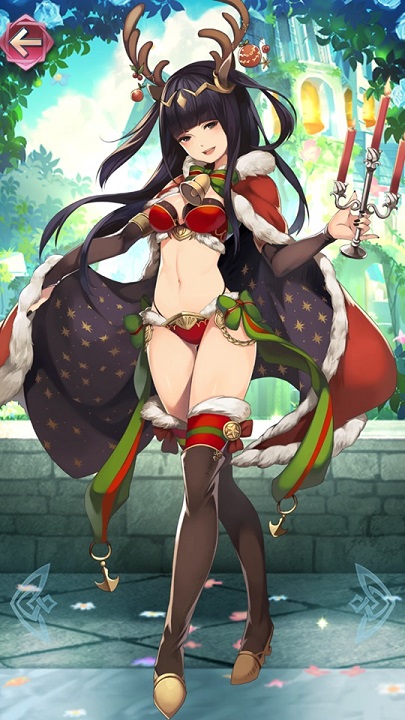
Unfortunately, even Nintendo isn’t safe from sexualizing its female characters for money. This is an unfortunate reflection of FEH’s business practice.
Nintendo and mobile gaming – where do they stand?
Business ethics aside, the success of Fire Emblem Heroes speaks for itself. For a series that was once so niche that the West didn’t even have every entry into the series translated and distributed here, now we are all playing Fire Emblem Heroes together across the world. Fire Emblem and Nintendo’s mobile gaming have both respectively come a long way. Fire Emblem Heroes owes it’s success to a combination of well-executed gameplay, presentation, core concept, overall generosity – and possibly most of all: waifus.
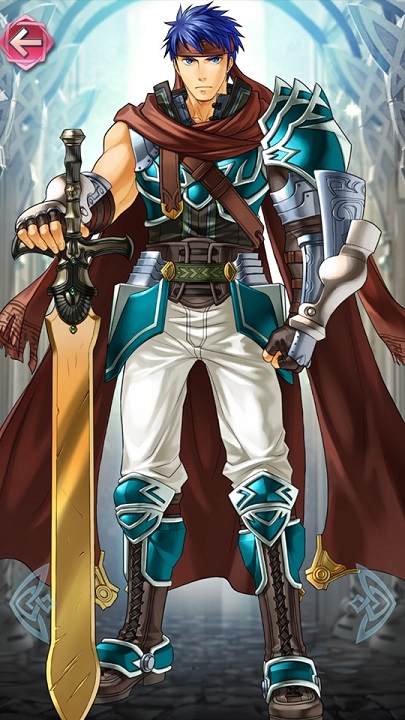
What do you think? Leave a comment.
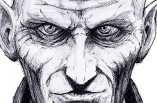
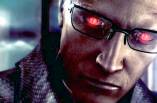
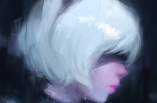

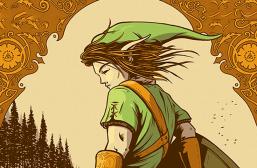
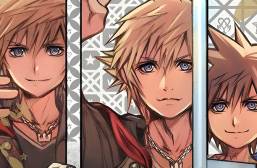
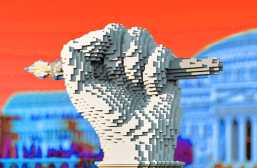
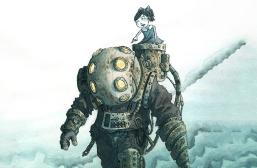



Their strategy worked. I would have never considered buying a Fire Emblem game. Since playing FEH, I am eagerly awaiting any type of FE game for my Switch.
I do not know anything about the lore or characters of the FE series, but the mobile game is good.
You are definitely not alone there! Some of the biggest Fire Emblem fans I know now started with Heroes first.
If you are ever interested and do have a 3DS, Awakening is a perfect entry point for the series. It’s very beginner friendly and introduces a lot of really fun mechanics!
Otherwise, I’m super excited for Fire Emblem Three Houses coming out on Switch soon!
I did enjoy Heroes, but I’ve been way more hooked on the mobile gacha adaptation for another RPG series, Final Fantasy Brave Exvius. Would recommend that game to anyone looking for another similar experience as FE Heroes.
+1 for Exvius. Been playing since launch week. Awesome game and very F2P friendly.
Recently started Fate Grand Order. Very cool gameplay but not a lot to do at the moment, like Fire Emblem Heroes. Played it the first week and quit since the game kind of sucked.
The Reddit community of this game is particularly hilarious.
I have spent way too much time on that subreddit… and I don’t even normally use reddit! But that one is pretty spectacular.
a year on and i still play this, its good for getting people in to the series what with the new game coming out.
Games like this is a curse to me, spend lots of money just to get the good stuff.
I believe that certain psychoactive substances give rise to prophetic visions.
This goes to show that explicitly good games can rise to the top of the gacha heap, like with Monster Strike, which was heavily skill-based (but did require a very specifically small range of viable units to stand a chance on boss stages, which made the gacha aspect frustrating). Fire Emblem Heroes plays exactly like you’d expect a pocket Fire Emblem game to play.
Oh, and waifus.
I’m a simple man… I see Gatcha style systems and I instantly forget the game ever existed.
Seems okay at first but once you get into it, it’s nothing special or even fun.
One of the biggest issue for this game that you’ll start to realize about mid game is the stamina gets more and more expensive while offering the same reward and not growing in capacity at all.
They actually recently overhauled the stamina system so that it actually costs way less than it used to!
I also had a huge problem with stamina early in the game’s life, but now it’s a lot more user-friendly!
Great study. My favorites will always be Path of Radiance and Radiant Dawn.
Tellius is one of my favourite video game worlds ever, and I will always hold it close to my heart. Radiant Dawn and Path of Radiance are phenomenal games. It’s a shame they’re so hard to play after their limited releases!
Path of Radiance and Radiant Dawn for virtual console Nintendo!
Better f2p mobile gachas out there and Heroes is pretty meh in comparison. Only real draw is that it’s Fire Emblem themed. If it wasn’t for FE characters it wouldn’t have much else going for it.
Which ones are they? I’m actually genuinely curious. The cultures and communities around gacha games intrigue me, and I’d love to see more examples of generous F2P mobile gachas! 🙂
It’s better than super mario run!
The numbers certainly speak for themselves!
Interesting analysis. I think greed will be the death of Video Games.
My biggest gripe so far is that, while the backgrounds and character art are great, the menus and GUI look cheap, like all those dime-a-dozen, F2P JRPGs and pocket-budget MMOs that infest the mobile market.
That’s true actually.
But in a recent update, they’ve streamlined a lot of the menus to at least be clearer than most mobile budget MMOs. Whenever I boot one of those up, I get lost in the first menu screen… FEH is at least relatively simple, even if it ends up being on the plain side with it’s menus and UI.
Lovely article. I’ve got a bunch of podcasts to catch up on, so I play Fire Emblem Heroes on mute while a a podcast is playing over it. So if anyone else has some podcasts they need to catch up on, there’s a little tip for you.
I actually do the exact same thing!
It’s the PERFECT game to listen to a podcast to. You can retain a lot of audio information from a podcast as you smash through some of those maps and earn some orbs!
i hope they add more game modes and more ways to earn orbs.
Do i need to play Fire Emblem Fates in order to understand the story or characters behind Fire Emblem Heroes?
Not in the slightest! Fire Emblem Heroes draws from all of the Fire Emblem games, but it actually has a rather self-contained and easy-to-understand story. The characters it draws from other games are basically just cameos with a bit of fan-service.
You shouldn’t have any trouble playing FEH at all even if you haven’t played a single Fire Emblem game at all 🙂
wonderful. it is great job
Honestly, how in the world can people play video games on screens this size?
Some people like playing Heroes on their tablet, I hear. But when I’m out and about and don’t have anything else to do, it’s nice to have Heroes on my phone 🙂
I don’t care if a game is singleplayer or multiplayer, setting up a game in a way where you need to “buy power” with real money is always bad for the game. Micro-transactions should always be cosmetics only. No exceptions.
Gacha systems are often very insidious, I agree.
Problem is it’s possible to be absolutely screwed by the Gacha system. You’ll see friends getting 5*s and your getting none. Putting you at a big disadvantage.
The indiscriminate luck is actually a really powerful force I agree. For everything it can give, it also can treat the player pretty badly…
If orbs were easier to collect and you could use them to directly buy the characters you wanted this could’ve been a solid game. Let’s be honest, bringing a traditional Fire Emblem game to mobile devices could’ve taken a lot more effort and the appeal of characters like Roy and Lucina from Smash Bros is one of the game’s biggest appeal to the casual market.
Pokemon GOOOOOOOOO.
A comprehensive look at what can make a game not only successful but approachable to a wider audience. It remains largely unbiased and shows some elements of good practice. Still not convinced on the “waifu” culture and the ethics behind propagating those stereotypes and potentially sexist views but it’s good to be aware and discuss them for sure.